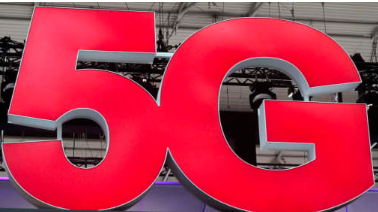5G Conference: Motivate by Freedom
On December 13 and 14, Keysight Technologies brought together engineers from industry and academia for "5G Tech Connect," a conference covering the challenges and opportunities surrounding 5G. EE Times was one of just a few media outlets invited. The conference opened on December 13 with a presentation from Maryam Rofougaran, co-founder and co-CEO of Movandi, who spoke as much about motivation as about 5G technology.
"People are motivated by having freedom," said Rofougaran to an audience of about 200. "People want to be challenged. That's how we created 40 patents in 18 months with just 20 engineers."
Focusing on the problems with using mmWave frequencies for wireless communications, Movandi engineers have gone from initial startup to producing engineering samples of its 28-GHz modular RF antenna/RF front end. They developed the ICs, beamforming antenna, board, packaging, beamforming algorithms, and control software, all since the company's founding in July 2016.
"We will have to think differently," said Rofougaran. "Traditional RF design won't work. mmWave changes everything. Signals get blocked; testing is new and challenging." Regarding test, Rofougaran was referring to the fact that over-the-air (OTA) testing will be inevitable because there will be no way to connect test equipment to wireless devices that use mmWave frequencies (24 GHz and higher). She noted the constraints that designers face, having been brought on by size, power, range, and especially cost. In addition, chip-to-chip signal losses can limit performance.
The cost of 5G deployment, however, isn't just the cost of connected devices sold to consumers. As Rofougaran noted (so did others the following day), the shorter range imposed by mmWave means that service providers will need more, and smaller, cells. But more cells in deployment means more fiber-optic runs to connect them to the network backbone. That's a significant cost, but users demand the bandwidth that mmWave can deliver. To minimize the number of small cells, engineers will have to maximize the range of signals. Hence, beamforming and phased-array antennas will be the norm for 5G. To that end, Rofougaran explained that with 64 antenna elements at both ends of a transmission, range could reach 1 km. A recent test of the modular antenna/RF front end showed line-of-sight data rates of 1.2 Gbps over 350 m.
Cost and range will be a critical design challenge for 5G to operate at mmWave frequencies. IC costs will come down, as they always do when volumes start to increase. Movandi is already showing how integration can reduce costs. Over time, the most significant costs of 5G will be from product reliability and truck rolls to deploy and maintain the many new cells that will be needed.
在线留言询价

5G Needs New Approach to Security

Partnership to Develop 5G Base Station Chip

5G: Huawei India CEO says open to provide source code for screening to allay security concerns

US has a 'concerted strategy' to push allies to reject Huawei's 5G equipment: Eurasia Group
- 一周热料
- 紧缺物料秒杀
| 型号 | 品牌 | 询价 |
|---|---|---|
| MC33074DR2G | onsemi | |
| BD71847AMWV-E2 | ROHM Semiconductor | |
| TL431ACLPR | Texas Instruments | |
| CDZVT2R20B | ROHM Semiconductor | |
| RB751G-40T2R | ROHM Semiconductor |
| 型号 | 品牌 | 抢购 |
|---|---|---|
| ESR03EZPJ151 | ROHM Semiconductor | |
| IPZ40N04S5L4R8ATMA1 | Infineon Technologies | |
| BP3621 | ROHM Semiconductor | |
| TPS63050YFFR | Texas Instruments | |
| BU33JA2MNVX-CTL | ROHM Semiconductor | |
| STM32F429IGT6 | STMicroelectronics |
- 周排行榜
- 月排行榜
AMEYA360公众号二维码
识别二维码,即可关注


请输入下方图片中的验证码:






















